Navigating the Wind Meter Market for Kiteboarding

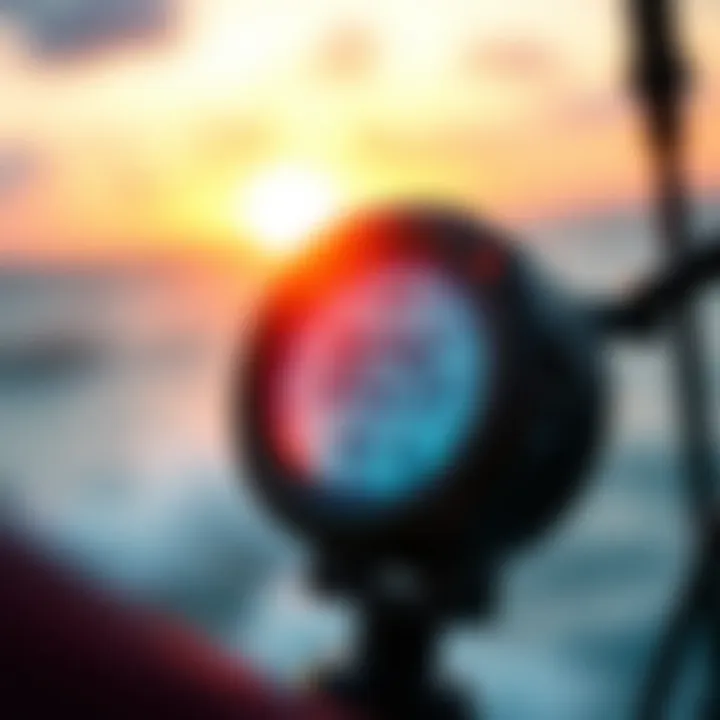
Intro
Kiteboarding, a blend of exhilaration and skill, heavily relies on understanding wind conditions. When the breeze picks up, it means the difference between an average ride and a thrilling experience. That’s where wind meters step in. In recent times, kiteboarding enthusiasts are not just relying on their instincts or guesswork to determine wind speeds; they seek precision. With so many options available on the market, a thorough understanding of wind meters becomes essential. Choosing the right wind meter can significantly enhance the quality of your kiteboarding sessions.
Gear and Equipment
In the realm of kiteboarding, the gear you choose can bolster not only your performance but also your safety. An inadequate setup might lead to missed opportunities during ideal wind conditions.
Essential Kiteboarding Gear for Beginners
For novice kiteboarders, having the correct equipment is critical. Here’s a rundown of basic essentials:
- Kite: This is your primary vehicle on the water. Choose a size that corresponds with your weight and skill level.
- Board: A beginner board should offer stability; opt for one that is designed for easy maneuverability.
- Harness: This piece of gear transfers the pull of the kite to your body, reducing fatigue.
- Safety Leash: Always ensure you are attached to your kite with a safety leash to avoid losing it in the water.
Equipping yourself with wind meters will also aid in understanding the dynamics of kiteboarding. These devices vary in features, and selecting the right one tailored to your needs can ensure safer and more enjoyable sessions.
Advanced Equipment for Experienced Riders
Once you've cut your teeth in beginner waters, it’s time to scour for advanced gear that can heighten your experience.
- High-Performance Kites: These kites come with better material and designs for greater lift and speed. They are tailored to match specific wind conditions.
- Hydrodynamic Boards: Advanced riders often benefit from boards that slice through water more effectively and offer enhanced responsiveness.
- Personal Flotation Device (PFD): While not just for show, a good PFD can improve your self-assurance on the water.
- Smart Wind Meters: Today's market offers intelligent models that can sync with apps, providing real-time data and forecasts right at your fingertips.
With all of this gear, it's clear why understanding the significance of each piece, including wind meters, promotes a safer and more enjoyable kiteboarding experience.
Techniques and Tips
An exhilarating sport requires not just good gear, but also informed techniques to excel. In the kiteboarding world, mastering skills can make a world of difference.
Safety Practices for Kiteboarding
Safety should always be at the forefront of your mind. Make it a habit to check:
- Wind Conditions: Use your wind meter to get an accurate reading before heading out.
- Area Assessment: Ensure you’re familiar with the water body you intend to ride. Look for hazards or areas with strong currents.
- Personal Limits: Knowing your limits can ensure you don’t push yourself too hard, avoiding potential mishaps.
A wind meter fitted with a safety feature can provide peace of mind, alerting you when conditions surpass your comfort zone.
Training Techniques to Improve Your Skills
Learning never stops when it comes to kiteboarding. Here are some training tips:
- Practice in Varying Conditions: Challenge yourself by riding in different wind speeds and water states.
- Join a Community: Engage with local kiteboarding communities—sharing tips and tricks can boost your learning curve.
- Wind Meter Familiarization: Spend time understanding all the features of your wind meter, as it will keep your sessions sharp and efficient.
In the fast-paced environment of kiteboarding, being informed and equipped with the right tools is paramount. Wind meters are not merely gadgets but essential instruments that add a layer of complexity and safety to your adventures in the air and on the sea.
"Knowledge is power. Not just in life, but on the water too, especially when it comes to understanding wind conditions."
Equipping yourself with insights from experts and hands-on experiences can set you apart from others in the field and ensure each outing is a leap of faith rather than a gamble.
For further reading and resources, explore:
Understanding Wind Meters
When it comes to kiteboarding, the wind can make or break your experience. Understanding wind meters is crucial because they serve as the gateway to interpreting wind conditions, which directly impacts your performance on the water. Wind meters, often a kiteboarder's best friends, provide essential data such as wind speed and direction. This information not only helps in selecting the right kite but also ensures safety and enjoyment on the water. With wind meters, kiteboarding enthusiasts can gauge perfect conditions to ride, thus enhancing both their skills and satisfaction.
Definition and Purpose
A wind meter, also known as an anemometer, is an instrument used to measure wind speed and sometimes direction. Broadly speaking, its primary purpose is to equip users with accurate readings to help make informed decisions regarding outdoor activities, particularly those reliant on wind conditions like kiteboarding. As you may expect, knowing how fast or in which direction the wind is blowing can define the kite size you need or the technique to adopt for a specific day.
In the realm of kiteboarding, where every gust can influence performance, these devices can significantly alter the approach to riding. Expecting a certain wind speed can help kiteboarders prepare better, whether it's ensuring the right gear is at hand or selecting the optimal time to hit the waves. Think of a wind meter as your personal meteorologist, providing data that is integral to making the most of your adventure.
How Wind Meters Work
Wind meters function based on various principles of physics, specifically focused on the movement of air. Commonly, anemometers employ cups or blades that rotate in response to the wind. As these cups or blades turn, they convert the movement into a measurable speed, allowing the readout on the device to display wind speed.
For instance, a simple cup anemometer has three cups mounted on horizontal arms. As wind flows, these cups catch the air, spinning the arms. The speed at which these cups rotate correlates with wind speed, and this data gets translated into numerical values on the display.
In modern applications, many digital wind meters integrate advanced technology that can also factor in temperature and humidity. Some models even feature Bluetooth connectivity, allowing you to track conditions on your smartphone. This level of data accuracy supports making real-time decisions, which is especially handy on dynamic days when conditions can rapidly shift.


By grasping exactly how these gadgets operate, kiteboarding aficionados can leverage wind meters effectively, optimizing their time on the water and ensuring safety. It's all about harnessing that sometimes fickle muse of the wind!
Types of Wind Meters
Understanding the different types of wind meters is crucial for anyone serious about kiteboarding and other outdoor activities affected by wind conditions. Each type comes with its own set of features, benefits, and considerations, tailored to meet the diverse needs of users. Knowing these distinctions allows kiteboarders and adventure seekers to select the right tool for their specific requirements, enhancing their experience by gaining accurate wind readings.
Anemometers
Anemometers are the classic choice in the realm of wind meters. These devices use rotating cups or blades to measure wind speed. The kinetic energy from the wind causes the cups to spin, giving a direct measurement of wind velocity. This mechanical method ensures reliability and durability, making anemometers a favored selection among many experienced kiteboarders.
However, it's worth noting that while they excel in wind speed measurement, anemometers may lack some advanced features that modern wind meters offer. For example, they often do not provide comprehensive data on wind direction or gust patterns. Hence, while they can be the workhorse of wind measurement, kiteboarders may need to complement them with additional devices or methods to get a complete picture of wind conditions.
"When choosing an anemometer, consider its response time and maximum wind speed capacity—features that can greatly affect your kiteboarding performance."
Digital Wind Meters
Digital wind meters have surged in popularity, especially among those who appreciate technology and efficiency. These devices combine sophisticated sensors with digital readouts to provide instant feedback on wind speed and direction. One of the standout features of digital units is their ability to display readings in various formats, such as meters per second or knots, allowing users to select the one that best suits their needs.
Additionally, many digital wind meters now come with built-in memory capability to store past readings. This is particularly beneficial for kiteboarders who want to track wind conditions over time. With the ability to analyze historical data, users can make informed decisions about when and where to kiteboard, fine-tuning their skills based on past experiences.
Analog Wind Meters
Analog wind meters bring a certain charm to wind measurement, often favored for their simplicity and straightforward design. These devices utilize analog dials rather than digital screens, which can appeal to those who prefer a no-frills approach. They are generally easy to use, making them ideal for beginners who may find digital interfaces overwhelming.
However, there are limitations to analog meters. Due to their manual nature, they may not provide real-time updates on changing wind conditions, which can be a serious drawback for fast-paced sports like kiteboarding. Still, for recreational athletes or outdoor instructors seeking a trustworthy and uncomplicated device, analog wind meters can be a satisfying choice.
Smart Wind Meters
In recent years, the advent of smart wind meters has revolutionized wind measurement technology. These devices connect to smartphones or tablets via Bluetooth, offering users a platform to access detailed wind data. This includes wind speed and direction, real-time updates, and even weather forecasts.
Smart wind meters can also boast features like notifications for optimal wind conditions or alerts about impending weather changes, proving to be invaluable for avid kiteboarders. The key advantage here is that users get to merge technology with outdoor sports, aligning their riding experiences with the latest innovations in wind measurement. However, the complexity of these devices may pose a challenge for some users, especially those less tech-savvy.
In short, when selecting the right wind meter, consider what aspects matter most—whether it’s the purely mechanical reliability of an anemometer, the tech-savvy world of smart devices, or the simplicity of analog designs. Each type has its merits and pitfalls, and understanding these nuances can greatly enhance a kiteboarder's ability to read the winds accurately.
Key Features to Consider
When you're on the hunt for a wind meter, understanding the critical features is crucial to making an informed choice. The right wind meter can greatly influence your kiteboarding experience, and these devices come packed with a variety of functionalities designed to meet specific needs of kiteboarders and outdoor enthusiasts alike.
Measurement Accuracy
Measurement accuracy isn't just a fancy term; it's the heart of a wind meter's performance. Whether you’re aiming to catch the perfect gust or gauge the shifting winds, you've got to trust the numbers. A reliable wind meter should provide precise readings to within a small margin of error. Consistency in measurements allows you to formulate strategies based on wind conditions, giving you the edge when hitting the water. Think about it—who wants to rely on a device that can’t review wind speeds accurately?
Durability and Build Quality
When it comes to outdoor equipment, durability can make or break your gear's shelf life. Wind meters face the elements head-on, so you want one built to withstand everything from salt spray to sudden drops. Look for meters that boast robust casings, ideally made from materials like polycarbonate or reinforced plastic. If a meter can endure after a tumble on rocky terrain or remain functional during a surprise rain shower, it's worth considering.
Portability
Let’s face it, lugging heavy equipment around isn't ideal for anyone. Portability can be a game-changer, especially for kiteboarders who need to travel light. An ideal wind meter should be compact enough to slip into your pocket or attach to your harness without feeling like you're dragging an anchor. Lightweight yet functional devices allow for spontaneity while exploring different kiteboarding spots, meaning you’re never caught without the right tools to help you gauge the wind.
Display Features
The way information is presented can significantly affect usability and experience. On the water, quick glance readings from your wind meter can save the day. Look for meters with clear, bright displays that are easy to read, even in glaring sunlight. Several models now come with backlit screens for low-light conditions as well, which can come in handy during those early morning or late evening sessions. Personalized settings, like units of measurement, can also make adapting to your preferences smoother.
Battery Life
Lastly, battery life is worth scrutinizing before making your purchase. If you find yourself constantly swapping out batteries or searching for a charger while at the beach, your fun might come to a grinding halt. Some of the best models out there today boast long-lasting lithium-ion batteries that can hold a charge through numerous outings. Certain wind meters even come with energy-efficient settings, ensuring you get the most out of every charge.
In summary, keeping these features in mind when diving into the market for wind meters can alleviate some of the headaches that come with decision-making. Evaluating measurement accuracy, durability, portability, display features, and battery life offers a well-rounded perspective to ensure you have the right device to enhance your kiteboarding adventures.
Popular Wind Meters on the Market
The world of wind meters is as varied as the conditions kiteboarders face on the water. Recognizing the different options available in the market is paramount for anyone looking to enhance their experience. These devices are not just gadgets; they serve as lifelines for kiteboarders, helping them gauge wind conditions accurately. Having reliable information about wind speed and direction can mean the difference between a thrilling ride and a dangerous situation.
A deeper understanding of the diverse offerings in wind meters ensures that both new and seasoned kiteboarders find the most suitable option for their unique needs. Furthermore, familiarizing oneself with the pros and cons of various models allows enthusiasts to make informed purchasing decisions. Diving into the available options—ranging from top-rated models to budget-friendly choices—shines a light on how to maximize both performance and safety on the water.
Top-Rated Models
When it comes to reliability and precision, top-rated wind meters stand out. Each of these models has been tried and tested, often emerging as favorites among experienced kiteboarders. One standout example is the Kestrel 5500, known for its high accuracy and robust build, essential for both casual outings and competitive situations. Its user-friendly interface makes it easy to read, even in challenging conditions.
Another excellent option is the Skywatch BL Li, which offers a sleek design along with precise readings. The compact form makes it perfect for adventure seekers who dislike heavy gear weighing them down. The Davis Instruments 6410 features a durable casing designed specifically for rough outdoor conditions, ensuring it survives the inevitable splashes and bumps.
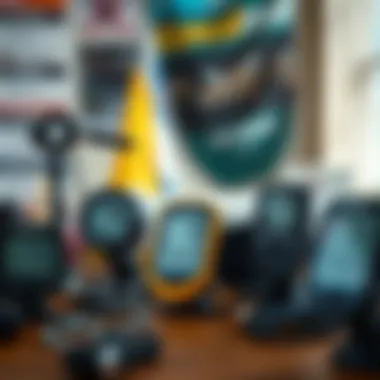
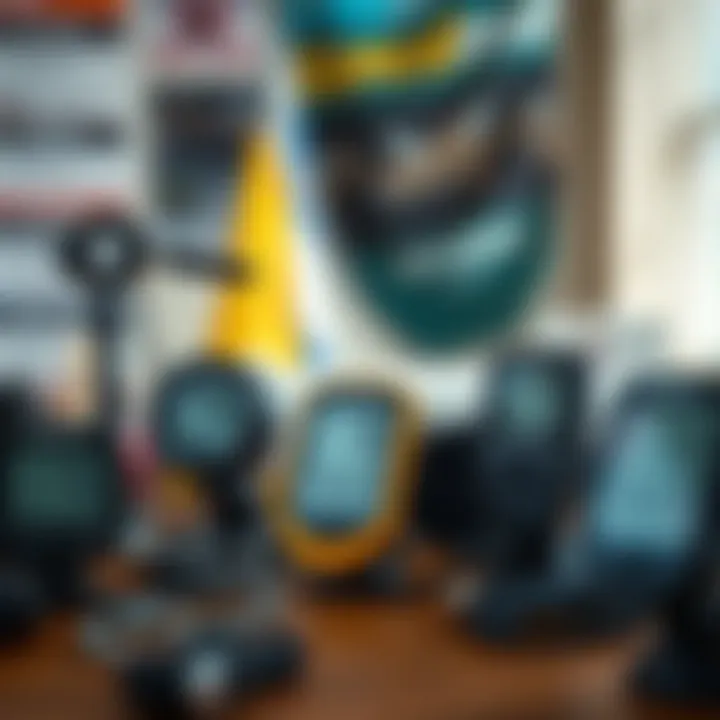
"Having a reliable wind meter is like having a coach by your side—guiding you through those perfect wind conditions."
Budget-Friendly Options
For kiteboarders just starting out or those who prefer saving a penny or two, budget-friendly wind meters offer effective options without skimping on functionality. The AcuRite 02027 is a well-rounded device, giving decent readings without breaking the bank. While it may lack some advanced features, it is perfect for beginners testing the waters.
Another commendable choice is the Ambient Weather WM-4. This model combines both affordability and a robust feature set. While the segments of its readings may not be as fine-tuned as pricier models, it still provides the necessary information for safe kiteboarding outings.
The Kestrel 1000 serves as an entry-level option with surprising accuracy for its price range. It's user-friendly, portable, and good enough to get a feel for wind conditions without a hefty investment.
Premium Choices
Stepping up the game, premium wind meters deliver top-tier performance and features tailored for serious kiteboarders. The Simrad Wind Compass stands as an outstanding example, combining cutting-edge tech with ease of use. Equipped with advanced wireless capabilities, it allows users to sync data with mobile apps, bringing real-time updates on wind conditions right to your fingertips.
The Kestrel 5700 takes it a notch higher. Designed for those who demand precision and versatility, it adds more functionalities such as temperature, humidity, and barometric pressure readings. This model is tailored for athletes who wish to analyze every little factor impacting their performance. More of a gadget than just a meter, it serves as a reliable tool for serious enthusiasts.
Lastly, the Nisus N-51 features superior data logging capabilities. With extensive memory storage and the ability to download data for analysis, this meter empowers advanced users to review patterns over time. This can be invaluable for competitive kiteboarders aiming to improve their performance.
By exploring these various wind meters, kiteboarding enthusiasts can find the right tools to match their personal style, budget constraints, and level of experience.
Comparative Analysis
When it comes to choosing a wind meter, diving into a comparative analysis is essential. This process not only helps you understand the landscape of options available but also clarifies how different types of wind meters cater to varying needs. Whether you’re looking for precision in your kiteboarding activities or simply want to know the wind speed for a casual day outdoors, understanding these differences is paramount.
A comparative analysis allows for a side-by-side examination of wind meter types—each with unique features, advantages, and limitations. This helps in highlighting the key elements that can significantly impact your decision. Additionally, it sets a solid ground for informed choices. Having a clear picture of what’s out there and what suits your requirements can save you time and ensure you invest in the right equipment.
Anemometer Versus Digital Models
In the realm of wind measuring, two models stand out: anemometers and digital wind meters. The former is often associated with traditional methods, while the latter incorporates technology and innovation.
Anemometers operate on mechanical principles. They come in various types, like cup anemometers, which consist of rotating cups that catch the wind. Simply put, they provide a tangible and reliable display of wind speed using physical movement. For kiteboarders seeking a no-fuss, straightforward approach, an anemometer could be the way to go. They are sturdy, requiring little upkeep, making them ideal for rugged adventures.
On the flip side, digital wind meters feature electronic displays and advanced sensors. They can measure wind speed and direction with impressive accuracy. These models often come with added features that appeal to the tech-savvy enthusiast. For instance, many digital models are equipped to save historical data or connect to mobile applications, making them perfect for those who want to analyze wind patterns over time.
So, which is right for you? If simplicity and durability are your priorities, a traditional anemometer might fit the bill. But for those who thrive on data, a digital model could enhance your kiteboarding strategy with precise measurements that evolve your experience.
Pros and Cons of Each Type
When weighing the two types, it helps to consider a few pros and cons:
Anemometers
- Pros:
- Cons:
- Durability: Built to withstand harsh outdoor conditions.
- No batteries required: Operating mechanically eliminates battery concerns.
- Simple design ensures easy use.
- Limited features compared to digital options.
- Basic measurements might not suffice for advanced kiteboarders looking for detailed analytics.
Digital Wind Meters
- Pros:
- Cons:
- High accuracy and detailed data collection improve decision-making.
- User-friendly interfaces appeal to a range of skills.
- Additional features enhance functionality, such as app connectivity.
- May require batteries or charging, creating potential downtime.
- More complex designs can be challenging for beginners.
In essence, your choice boils down to what you value most—simplicity and reliability or technology and precision. Understanding these traits enriches the overall kiteboarding experience, significantly enhancing your confidence out on the water.
Both options have their place in the toolkit of kiteboarders, with the best choice hinging on individual preferences and desired functionality. Evaluating these factors ensures that you select a wind meter tailored to your kiteboarding adventures.
Purchasing Considerations
When deciding on a wind meter, it's essential to weigh several purchasing considerations that can impact not only your immediate needs but also your long-term satisfaction. Understanding these elements plays a crucial role in making an informed decision, especially for kiteboarders who depend on accurate wind measurements. Selecting the right model can enhance performance, ensure safety, and elevate your overall kiteboarding experience.
Where to Buy
Identifying the right place to purchase a wind meter can seem like looking for a needle in a haystack, but there are several trusted avenues that you might explore:
- Specialty Sporting Stores: These shops often stock models tailored to outdoor sports. Staff typically have firsthand experience and can provide valuable recommendations tailored to kiteboarding needs.
- Online Retailers: Websites like Amazon or dedicated sports ecommerce platforms often have extensive selections. They typically feature customer reviews which can help in making a more educated choice.
- Manufacturer Websites: Buying directly from brands such as Kestrel or Vaavud can also be a smart move, as they may offer exclusive models or deals. Plus, you can often find the latest technology this way.
- Second-hand Platforms: If you're looking to save a few bucks, consider platforms like eBay or Facebook Marketplace. Just be wary of condition and returns when going this route.
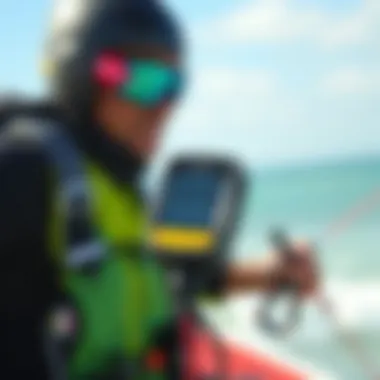
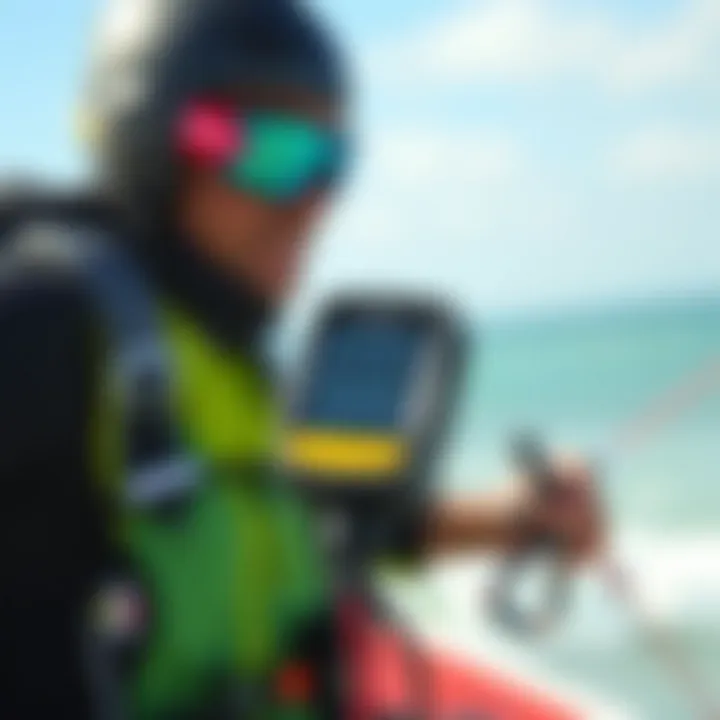
Choosing the right venue can not only save you money but also ensure you get the best after-sales support.
Understanding Warranty and Support
The importance of warranty and support should not be brushed aside. A solid warranty can save you a headache down the line and ensure your investment is protected. Here are a few elements to consider:
- Duration of Warranty: A longer warranty often signifies confidence in the product quality. Usually, warranties range from one to three years, so think about how long you intend to use it and potentially resell it later.
- Coverage Details: Make sure to read the fine print. Warranties that cover only significant malfunctions or exclude normal wear and tear might leave you in a lurch when something minor goes wrong.
- Customer Support Availability: Contacting the manufacturer's support team should be straightforward. Check reviews to see how responsive they are to inquiries; poor support can turn a minor issue into a major inconvenience.
“A penny saved is a penny earned,” so it pays to have a good warranty and knowledgeable support when purchasing your wind meter.
Understanding these purchasing considerations ensures that you invest wisely and equip yourself with a reliable tool that enhances your kiteboarding adventures.
Maintaining Your Wind Meter
Keeping your wind meter in tip-top shape is critical, especially if you’re someone who relies on precise readings while kiteboarding or engaging in other outdoor activities. Regular maintenance can enhance the lifespan of your device, ensuring that you’re always prepared to hit the waves or navigate challenges with the right data. It’s not just about the accuracy of the readings, but also about keeping your investment safe from the elements and everyday wear and tear. Let’s break it down into two main areas: care tips for longevity and troubleshooting common issues.
Care Tips for Longevity
To make sure your wind meter lasts and performs well, follow these practical care tips:
- Keep It Clean: Wind meters can collect dust, salt, or debris from the environment. A gentle wipe with a damp cloth after use can prevent build-up that might affect its function.
- Store Properly: After an adventurous day, store your wind meter in a protective case to shield it from moisture and impact. A dedicated compartment in your gear bag can work wonders.
- Battery Maintenance: Regularly check the battery and replace it when needed. A drained battery can lead to inaccurate readings just at the moment you need them most.
- Inspections: Every so often, do a thorough checkup to ensure all buttons are functional, and there are no visible damages to the device. Catching small issues can save you from bigger headaches later on.
These straightforward actions can keep your reading reliable and extend the useful life of your wind meter, making it an invaluable companion on your adventures.
Troubleshooting Common Issues
Every device has its quirks, and wind meters are no exception. If you encounter issues, don��’t fret—here's how to tackle some common problems:
- Inaccurate Readings: This can happen for various reasons. First, ensure that the sensor is clean and unobstructed. If the device still misbehaves, a factory reset or recalibration might do the trick. Check your manual for detailed instructions.
- Battery Problems: If your meter isn’t turning on, it could be as simple as a dead battery. Before panicking, replace the battery with a fresh one. Sometimes corrosion on the terminals can also impede battery function, so a quick clean can solve the issue.
- Display Issues: A flickering or blank screen can be annoying. This might indicate internal damage or a drained battery. In severe cases, consult the warranty terms for support options.
- Connectivity Glitches: If your device includes Bluetooth or other connectivity features, ensure that it's paired correctly. A quick disconnect and reconnect should usually reset the connection.
"Regular care and timely attention to issues can keep your wind meter functional for years, making it worth every penny you spend."
In summary, maintenance is not merely a suggestion; it’s a necessity for anyone serious about utilizing a wind meter. By establishing a simple routine of care and being attentive to troubleshooting, you can enrich your outdoor experiences while kiteboarding, and maintain the precision of your equipment. Keeping your wind meter in prime condition isn't complicated; it just requires a bit of diligence and foresight.
Future Trends in Wind Measurement Technology
The landscape of wind measurement technology is continuously evolving, with innovations shaping how enthusiasts engage with this essential equipment. Understanding these trends is crucial not just for kiteboarders looking to enhance their sessions, but also for anyone working in outdoor activities where wind conditions significantly impact performance. The march towards smarter, more efficient, and connected technology transforms wind meters from simple instruments to integral parts of an athlete's toolkit. With the spread of wearables and mobile tech, staying ahead of the curve can empower kiteboarders to make better decisions based on precise, real-time data.
Innovations on the Horizon
Among the most exciting developments is the integration of artificial intelligence in measuring tools. Imagine a wind meter that predicts not only current wind strength but forecasts upcoming changes in conditions based on historical data and real-time inputs. This type of intelligence would be akin to having a seasoned coach whispering strategies directly into your ear as you prepare for a session. Additionally, advancements in sensor technology now allow for smaller, more sensitive devices that minimize errors in readings, presenting a clear picture of wind patterns.
Moreover, the rise of mobile applications paired with wind meters enables seamless data sharing among users. These apps often provide community-based input, allowing kiteboarders to share live updates from multiple locations, making it easy to decide whether it's worth packing up your gear for a day on the water. Enhanced connectivity ensures that every rider, from the novice to the seasoned professional, can benefit from shared information so they can ride when conditions are just right.
"The future is not something we enter. The future is something we create." - Leonard I. Sweet
Some emerging devices will also leverage renewable energy sources, like solar charging, to ensure wind meters remain powered even during extended trips to remote locations. This improvement not only provides convenience but reduces the environmental impact of outdoor sports.
Impact on Kiteboarding
As technology progresses, kiteboarding stands to benefit tremendously. With reliable data at their fingertips, kiteboarders can gauge ideal conditions for jumping, riding, and performing tricks, optimizing their time spent pursuing the sport they love. Importantly, knowing precise wind patterns reduces the risk associated with mishaps caused by unexpected weather changes on the water. That safety net can foster a more comfortable environment, encouraging less experienced kiteboarders to explore the sport further.
Furthermore, these technological advancements are also set to broaden the sport's appeal. New kiteboarders may find the wealth of data available on current conditions alluring, knowing they can access information similar to what seasoned riders utilize for planning their outings. This accessibility could lead to an influx of diverse participants in kiteboarding, enriching the community and fostering a culture of sharing knowledge and experience.
As we push forward, one thing remains clear: the integration of these innovations not only enhances the kiteboarding experience, making it safer and more enjoyable, but also weaves a brighter future for the sport altogether.
Finale
As we wrap up our exploration of wind meters, it’s crucial to reflect on the myriad aspects discussed within this article. The significance of understanding how these devices work and their various types cannot be overstated, especially for kiteboarders and outdoor enthusiasts who rely heavily on accurate wind measurements to ensure safety and enhance their performance.
Recap of Key Points
In delving into this topic, we covered several pivotal points:
- Functionality of Wind Meters: We reviewed how wind meters serve as essential tools for gauging wind speed and direction, vital for activities like kiteboarding.
- Varieties of Wind Meters: From anemometers to smart models, each type of wind meter offers unique advantages, catering to different user preferences and requirements.
- Key Features to Consider: Accuracy, durability, and display features were highlighted as key elements that directly impact the effectiveness of wind meters.
- Market Offerings: A thorough overview of popular models helped in understanding both budget-friendly and premium options available to consumers.
- Maintenance Tips: Simple care practices can extend the life of a wind meter, ensuring that users always have access to reliable data.
- Future Trends: Innovations on the horizon promise to enhance wind measurement, impacting activities such as kiteboarding in increasingly sophisticated ways.
Final Thoughts on Selecting a Wind Meter
Selecting the right wind meter is not merely about choosing the most expensive or feature-rich model; it's about finding a device that fits your specific needs and enhances your kiting experience. Consider factors like your skill level, the frequency of use, and the type of conditions you typically encounter.
Ultimately, a well-chosen wind meter can be a game-changer. For beginner kiteboarders, a reliable yet simple device might suffice, while seasoned riders may benefit from advanced features offered by premium models.
"The right tool can make all the difference in performance and enjoyment."
In a sport where variables can change in a heartbeat, having access to precise wind measurements opens up a world of possibilities for fun and safety on the water.
By keeping these insights in mind, kiteboarders and other adventurers can make decisions rooted in well-informed choices, ensuring their time spent outdoors is not only exciting but also safe.



